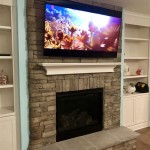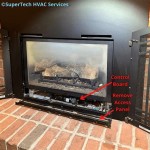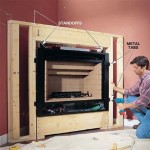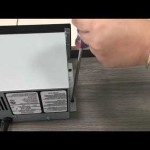Pilot Light For Gas Fireplace Won't Stay Lit: Troubleshooting and Solutions
A gas fireplace offers warmth and ambiance, particularly during colder months. A crucial component of its operation is the pilot light, a small, continuous flame that ignites the main burner when heat is desired. When the pilot light consistently fails to stay lit, it disrupts the fireplace's functionality and potentially indicates an underlying issue that requires attention.
Several factors can contribute to this problem. Understanding these potential causes is the first step towards effectively diagnosing and resolving the issue. A structured approach to troubleshooting, coupled with a basic understanding of the fireplace's components, can often lead to a quick and cost-effective solution. If the problem persists or involves gas line issues, consulting a qualified HVAC technician is highly recommended to ensure safety and proper repair.
Dirty or Clogged Pilot Light Assembly
One of the most common reasons for a pilot light that won't stay lit is a dirty or clogged pilot light assembly. Over time, dust, debris, and even spiderwebs can accumulate within the small orifice of the pilot light, restricting the flow of gas. This reduced gas flow can result in a weak or unstable flame that extinguishes easily. Minerals from the gas supply can also build up, further obstructing the passage and affecting the pilot light's performance.
To address this issue, the pilot light assembly needs to be cleaned. First, turn off the gas supply to the fireplace at the shut-off valve. This valve is typically located near the fireplace itself and is essential for safety. Once the gas is off, allow the fireplace components to cool completely. Consult the fireplace's manual for instructions on accessing the pilot light assembly, as designs vary between models. Once accessed, carefully clean the pilot light orifice using a thin wire or a specialized pilot light cleaning tool. Avoid enlarging the orifice, as this can affect the pilot light's functionality. Compressed air can also be used to dislodge any remaining debris. After cleaning, carefully reassemble the pilot light assembly according to the manufacturer's instructions.
Before relighting the pilot light, inspect the pilot light tube for any kinks or damage. This tube carries the gas to the pilot light assembly, and if it's compromised, it could restrict gas flow. If any damage is observed, the tube should be replaced. Once all components are reassembled and the gas supply is turned back on, attempt to relight the pilot light following the manufacturer's ignition procedure. If the pilot light now stays lit, the issue likely stemmed from a dirty or clogged assembly.
Faulty Thermocouple or Thermopile
The thermocouple or thermopile is a safety device that detects the presence of the pilot light flame. It works by generating a small electrical current when heated by the flame. This current is crucial because it keeps the main gas valve open, allowing gas to flow to the main burner. If the thermocouple or thermopile fails to detect the pilot light flame, it will shut off the gas supply, causing the pilot light to extinguish.
A faulty thermocouple or thermopile is a frequent culprit when a pilot light refuses to stay lit. These devices can degrade over time due to constant exposure to heat and the corrosive effects of combustion byproducts. Testing the thermocouple or thermopile requires a multimeter capable of measuring millivolts DC. With the pilot light lit, place the multimeter probes on the thermocouple's terminals and observe the voltage reading. The reading should be within the manufacturer's specified range, usually around 20-30 millivolts DC for a thermocouple and higher for a thermopile. If the voltage is significantly lower than the specified range, the thermocouple or thermopile is likely failing and needs replacement.
Replacing a thermocouple or thermopile involves disconnecting the old unit from the gas valve and the pilot light assembly. Ensure the gas supply is turned off before proceeding. The new thermocouple or thermopile should be installed following the manufacturer's instructions, paying close attention to the proper connections and ensuring the sensing tip is correctly positioned in the pilot light flame. After replacement, relight the pilot light and verify that it stays lit and the main burner operates correctly. A correctly functioning thermocouple or thermopile is essential for the safe and reliable operation of the gas fireplace.
Insufficient Gas Pressure or Regulator Issues
The pilot light requires a consistent and adequate supply of gas to maintain a stable flame. Fluctuations or insufficient gas pressure can cause the pilot light to flicker and eventually extinguish. This issue can stem from various sources, including problems with the main gas supply line, a faulty gas regulator, or even other gas appliances drawing excessive gas from the same line.
Checking the gas pressure requires specialized equipment and knowledge and is best left to a qualified gas technician. However, a homeowner can check for obvious signs of low gas pressure in other appliances. If other gas appliances in the home, such as a stove or furnace, are also experiencing difficulties with ignition or maintaining a flame, this could indicate a broader issue with the gas supply. In such cases, contacting the gas utility company is essential to investigate potential problems with the main gas line or the gas meter.
The gas regulator, typically located near the gas valve on the fireplace, is responsible for maintaining a consistent gas pressure to the appliance. A malfunctioning regulator can cause pressure fluctuations that affect the pilot light. Inspect the regulator for any signs of damage or corrosion. If problems are suspected, a qualified technician should test and, if necessary, replace the regulator. Attempting to repair or adjust the gas regulator without proper training and equipment is dangerous and should be avoided. Ensuring a consistent and adequate gas pressure is crucial for the reliable operation of the gas fireplace and the safety of the occupants.
Addressing a pilot light that won't stay lit often involves a process of elimination, starting with the most common and easily addressable causes. While some basic troubleshooting steps can be performed by homeowners, it is important to prioritize safety and seek professional assistance when dealing with gas line issues or complex repairs. Regular maintenance, including cleaning the pilot light assembly, can help prevent future problems and ensure the continued reliable operation of the gas fireplace.

Gas Fireplace Won T Stay Lit Magic Touch Mechanical

Gas Fireplace Won T Stay Lit Magic Touch Mechanical

Fireplace Won T Stay Lit This Is How You Fix It

How To Fix A Low Or Weak Pilot Light

My Furnace Pilot Light Won T Stay Lit What Now Phyxter Home Services

Pilot Won T Stay Lit Gas Fireplace Doityourself Com Community Forums

My Gas Fireplace Won T Stay Lit Here S The Fix

Why Doesn T My Gas Pilot Light Stay On Handy Hints And Tips By A Licensed Plumber In Adelaide

My Gas Fireplace Won T Stay Lit Here S The Fix

Why Doesn T My Gas Pilot Light Stay On Handy Hints And Tips By A Licensed Plumber In Adelaide
Related Posts








